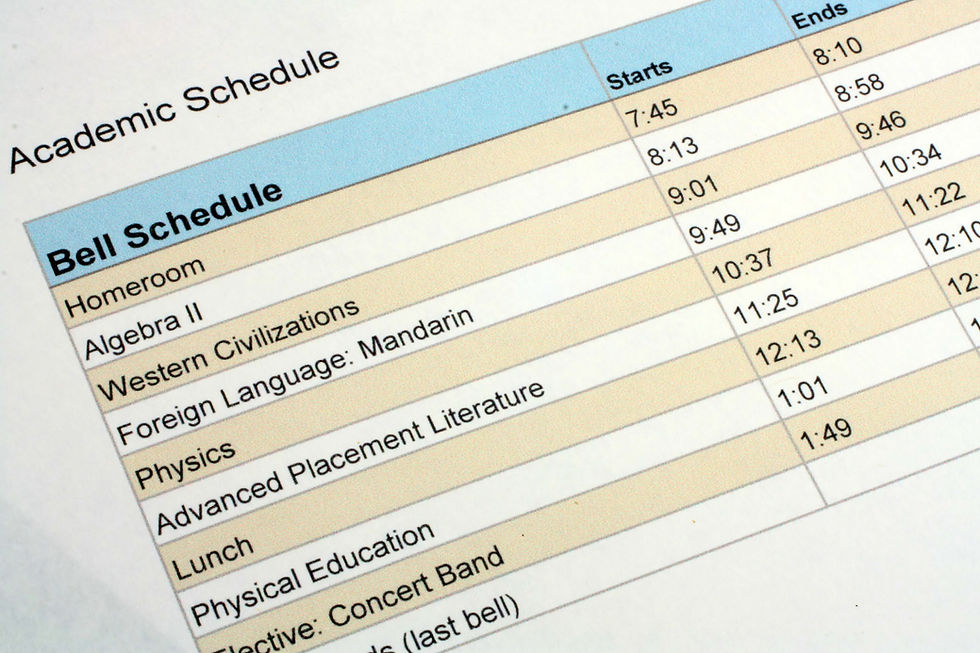What you need to know about ED
- Alison Merzel

- Oct 27, 2021
- 3 min read
Since it is October 27 and many students are furiously preparing applications to hit the November 1st Early Decision deadline, I thought I would remind you what you need to think about when considering an Early Decision application.
1) You can only apply ED to one school. You are, however, allowed to also apply to schools using the Early Action deadline. You can apply to multiple EA* schools but only one ED school. When you apply ED, the student, the parent, and the high school counselor sign an agreement that "the student must promptly withdraw the applications submitted to other colleges and universities and make no additional applications to any other university in any country" should the student be offered admission.
*The exception to this is for the select schools that use something called Restrictive Early Action (REA) or Single Choice Early Action (SCEA). Instead of having an ED deadline, schools like Harvard, Stanford and Princeton use these deadlines. Unlike ED, they are not binding; students don't have to commit to them and they still have until May 1st to make a decision. However, if you select one of these deadlines for one of these schools, you are not permitted to apply to any other university under the ED deadline or any other private university/college using the EA deadline.
2) You hear back early. You typically learn your admissions decision around December 15th, which is before any of the Regular Decision applications are due. This gives students time to still submit additional applications if they do not get into their ED school.
3) What is the difference between ED I and ED II? For some schools, there is more than one ED round. The ED I deadline is typically around November 1 and the ED II deadline typically falls around the same time as the Regular Decision deadline. In addition to the students that are just choosing ED I as their first choice, the ED I pool often includes "hooked" students. What does that mean? Hooked students refer to students that fall into one of the following buckets - recruited athlete; special talent; legacy; large donor family; celebrity kid; kid whose parent is a faculty member.
The ED II deadline was created to give students another opportunity to make a binding commitment to a school if a) they got deferred or did not get into their ED I school or b) if they needed more time to make the decision to apply ED. Keep in mind that ED I students are evaluated just among themselves; however ED II applicants are often considered alongside the RD pool, making this decision potentially even more competitive than ED I or RD.
4) Who benefits more from ED, the school or the student? Truthfully, both ED deadlines benefit the school more than the student. Yes, there is a benefit to learning your admissions outcome before the holidays and being done with the college applications process. It is also true that the likelihood of getting into a school is oftentimes significantly higher during the ED round. To see proof of this, check out the amazing spreadsheet that my colleagues Jeff Levy and Jennie Kent publish on their website every year.
However, the true benefit of the ED deadline goes to the school. When a student applies ED, they lose the ability to compare offers of admission - to evaluate whether one school is offering more generous need or merit-based aid. Furthermore, they lose the gift of time - time to visit each school on their list, talk to other current and admitted students and alumni, and thoughtfully and carefully consider which of the schools is going to be the best fit.
The school, on the other hand, gets to have their pick of the litter - selecting who they want from among the most eager and qualified pool of applicants to begin to "shape their class." They have enrollment goals that they need to meet and the ED pool allows them to begin to meet these. They know that they have a captive audience in the ED pool because whoever they admit is going to enroll. This protects their yield (the percentage of students who accept the offers of admission). THEN, once they have the first third to half of the class admitted through ED, they can fill in the gaps with the RD round.
Bottom line: If a student has done their research to know that they have a true first choice school and if financial aid isn't a determining factor, ED can offer better odds for admission. Just go into it eyes wide open.


